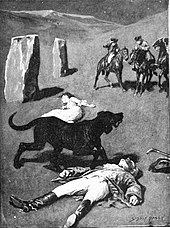I’ve been thinking a lot (I’m always…thinking a lot…it feels like effort, and it’s such a good excuse…) about what I do and don’t enjoy about having a blog. Some of that isn’t resolved, and that’s OK, but I did run into my old nemesis in there– Letting Perfect Be the Enemy of Good Enough. So, take a hike, All or Nothing Thinking. I want to enjoy my life a little more.
Before I get to the fun Connection, though, I want to write about a Serious Connection. One place different types of creative people can connect is on the picket line. I stand in support of the WGA and of SAGAFTRA. Anyone who will speak up about unhinged corporate greed with the clout to be heard, will speak for us all. Creative labor is labor, and creative product has multiple types of value. !!!!!!
The Fun Connection goes along with my Mourning post because it’s another of those moments when things raised their hands from different parts of the room. This was the initial inspiration:

Roxi H, you are fabulous. When I shared this in social media, a friend told me her young adult daughter referred to the c-veg as “sad broccoli.”
So my mind went immediately to poet John Keats. As it does, you know. A sad, pale vegetable is going to lead me to two different stanzas of “La Belle Dame Sans Merci”:
O what can ail thee, knight-at-arms,
Alone and palely loitering?
The sedge has withered from the lake,
And no birds sing.
…
I saw pale kings and princes too,
Pale warriors, death-pale were they all;
They cried—‘La Belle Dame sans Merci
Thee hath in thrall!’
It’s a trippy little poem about being seduced by a faery and left abandoned and possessed on the sad shore there where he is. Keats was SO good at the uncanny/gothic/nature/sex thing. Less into stir-fry veggies, but I hope he would forgive the connection. It was fun for me! I honestly think he would have given a Like to Roxi Horror, anyway.







